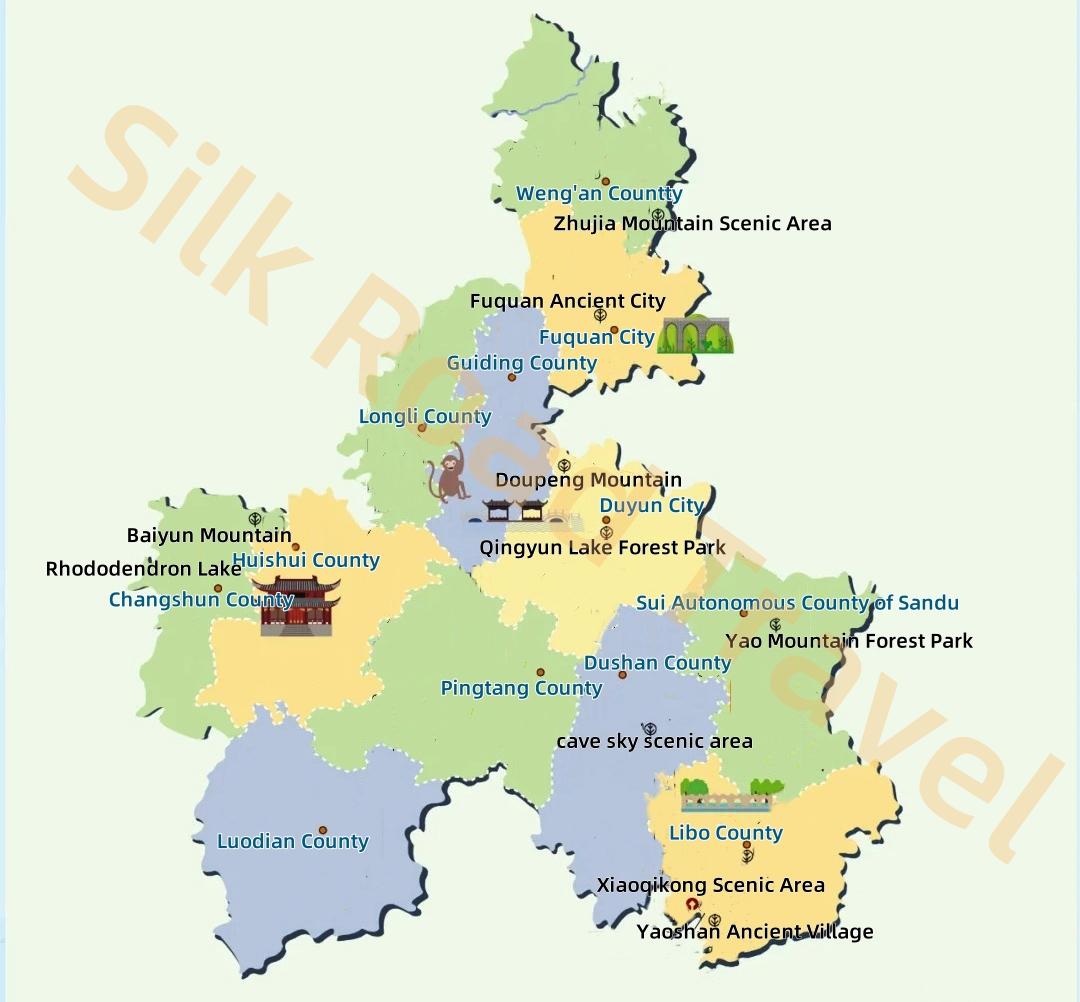Guizhou, a provincial administrative region of China, is situated in the southwestern part of the country, bordering Sichuan Province and Chongqing Municipality to the north, Hunan Province to the east, Guangxi Zhuang Autonomous Region to the south, and Yunnan Province to the west. Characterized by its unique karst landscape, Guizhou is renowned for its diverse and breathtaking scenery.
With a total area of 176,200 square kilometers, Guizhou Province has jurisdiction over six prefectural cities: Guiyang, Zunyi, Liupanshui, Anshun, Bijie and Tongren, and three ethnic autonomous prefectures: Southeast Guizhou, South Guizhou and Southwest Guizhou. By the end of 2023, the resident population of Guizhou is 38.65 million.
The province is renowned for its diverse terrain, ranging from jagged krst peaks that rise sharply from the ground to deep, serene valleys that cradle hidden villages. The misty mountains, often shrouded in clouds, appear like ethereal giants guarding the secrets of the land. The rivers that snake through these mountains, clear and sparkling, are the lifeblood of the region, nurturing the lush vegetation and vibrant wildlife.
What truly sets Guizhou apart is its unique karst landscape. Here, limestone formations have been eroded by wind and water over millions of years, creating a landscape of jagged peaks, sinkholes, and caves. These karst formations are not just visually stunning; they also play a crucial role in the province's ecology, affecting water flow, soil fertility, and biodiversity.
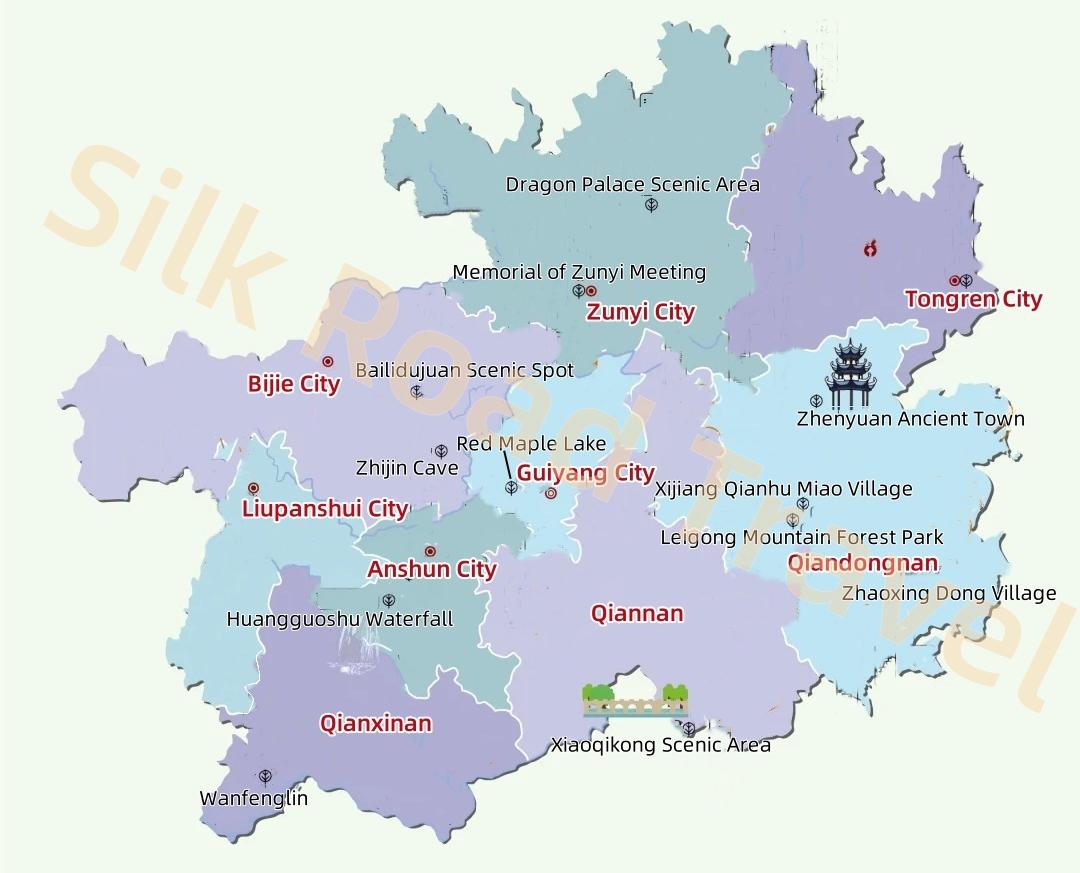
Guiyang City
Guiyang City is situated in the southeast of Guizhou Province, bordering four counties of the Qiannan Buyei and Miao Autonomous Prefecture: Weng'an, Longli, Huishui, and Changshun. To its west, it abuts Pingba District of Anshun City and Zhijin County of Bijie City. In the north, it neighbors Qianxi City and Jinsha County of Bijie City, as well as Bozhou District of Zunyi City. With a total area of 8,043 square kilometers, Guiyang City is a geographical gem that offers a unique blend of natural landscapes and cultural heritage. The city's diverse terrain and rich cultural traditions make it a captivating destination for travelers seeking to explore the beauty and depth of Guizhou Province.
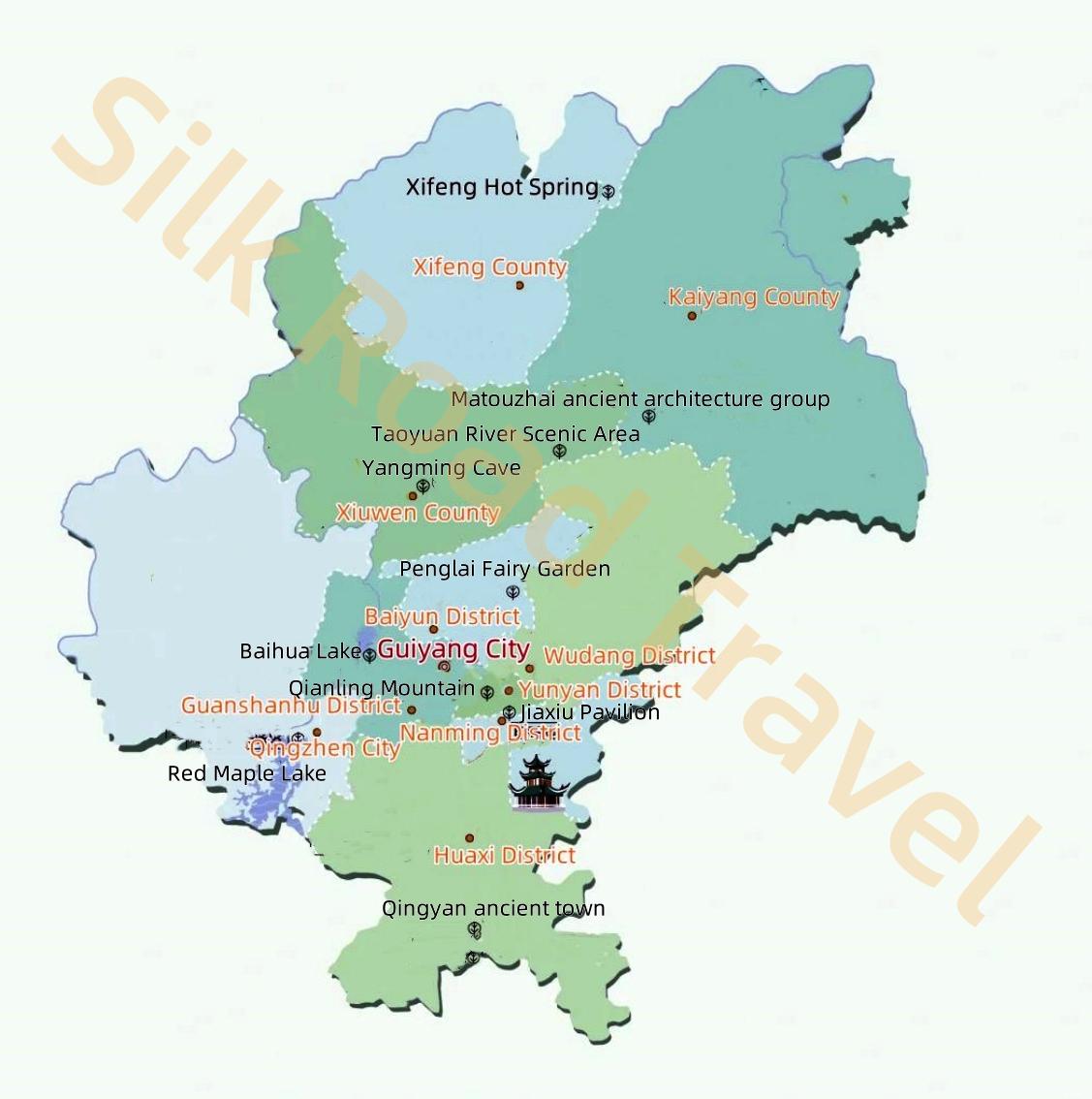
Zunyi City
Zunyi City, a prefecture-level city under the jurisdiction of Guizhou Province, boasts a diverse administrative structure consisting of three districts, seven counties, two autonomous counties, and two county-level cities. Spanning a vast area of 30,762 square kilometers. Zunyi is situated in a transitional zone between the Yunnan-Guizhou Plateau and the rolling hills of Hunan and the Sichuan Basin, resulting in significant terrain variations and a complex landscape. The altitude of the city ranges generally between 800 and 1,300 meters.

Liupanshui City
Liupanshui City, a prefecture-level city under the jurisdiction of Guizhou Province, covers a total area of 9,914 square kilometers. Administratively, it consists of two districts, one special administrative region, and oversees one county-level city. Geologically, Liupanshui belongs to the Yangtze Paraplatform and Upper Yangtze Fold Belt, with an altitude ranging from 1,400 to 1,900 meters. The city's landscape is primarily characterized by limestone karst mountains and hills, complemented by a diverse array of geomorphic features such as basins, mountain plateaus, highlands, and gorges.
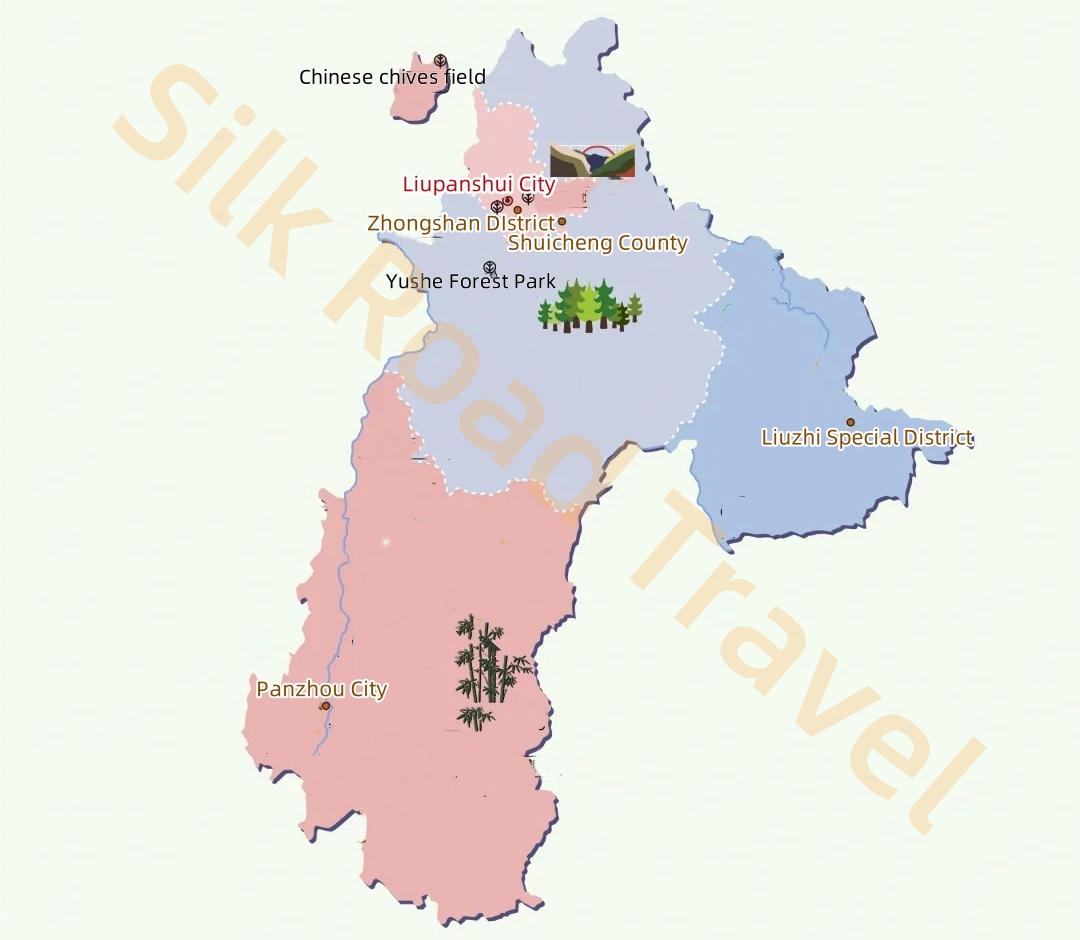
Anshun City
Anshun City, a prefecture-level city under the jurisdiction of Guizhou Province, is located in the central-western part of Guizhou, situated on the watershed between the Wujiang River Basin of the Yangtze River system and the Beipanjiang River Basin of the Pearl River system. This geographical position results in a terrain that is high in the middle and low at the north and south, as well as high in the northwest and low in the southeast. Anshun is a typical concentration area of karst landforms in the world. With a total area of 9,267 square kilometers, the city administers two districts and four counties.
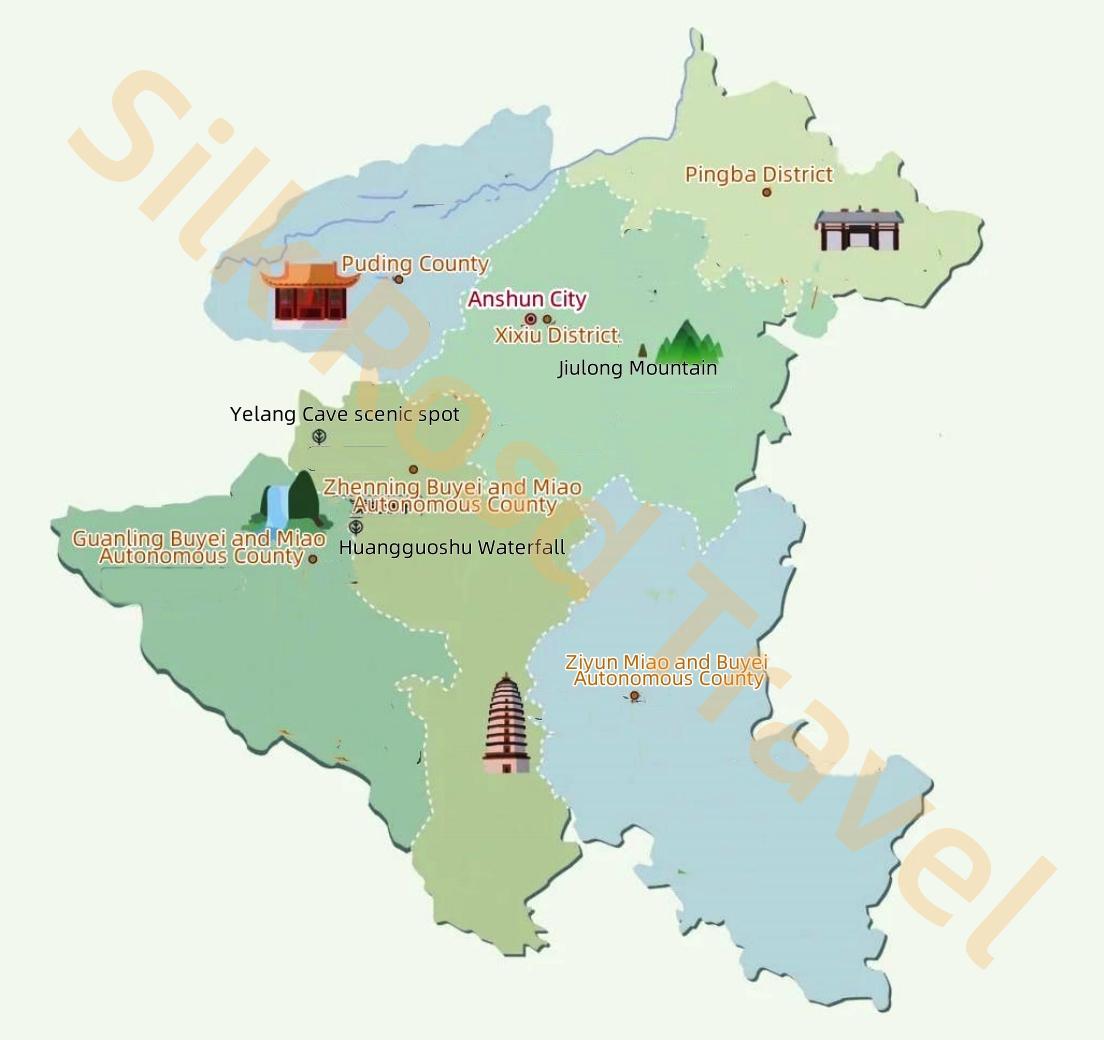
Bijie City
Located in the northwestern part of Guizhou Province, Bijie City is a prefecture-level city under the jurisdiction of Guizhou. With a vast territory spanning 26,900 square kilometers, it comprises one district, six counties, and oversees one county-level city. The geological structure of Bijie is intricate, with intricate folds and faults intertwined, giving rise to a diverse array of karst landforms.
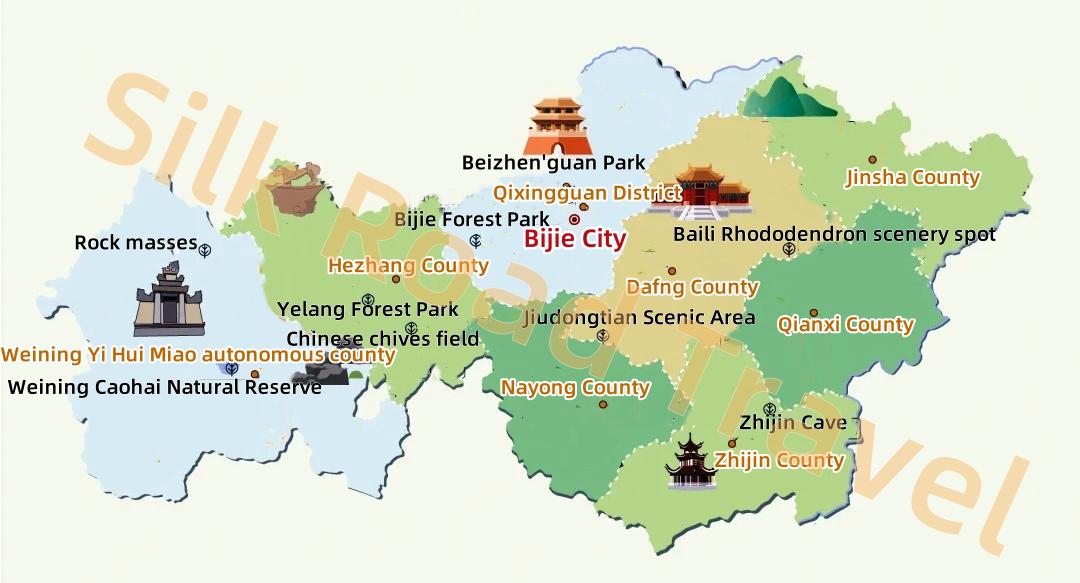
Tongren City
Tongren City, a prefecture-level city under the jurisdiction of Guizhou Province, is situated in the northeastern part of Guizhou, nestled in the heart of the Wuling Mountainous Region. Characterized by a terrain that rises in the northwest and slopes gently downwards towards the southeast, the majority of Tongren's territory is mountainous. With a total area of 18,003 square kilometers, the city administers two municipal districts and eight counties.
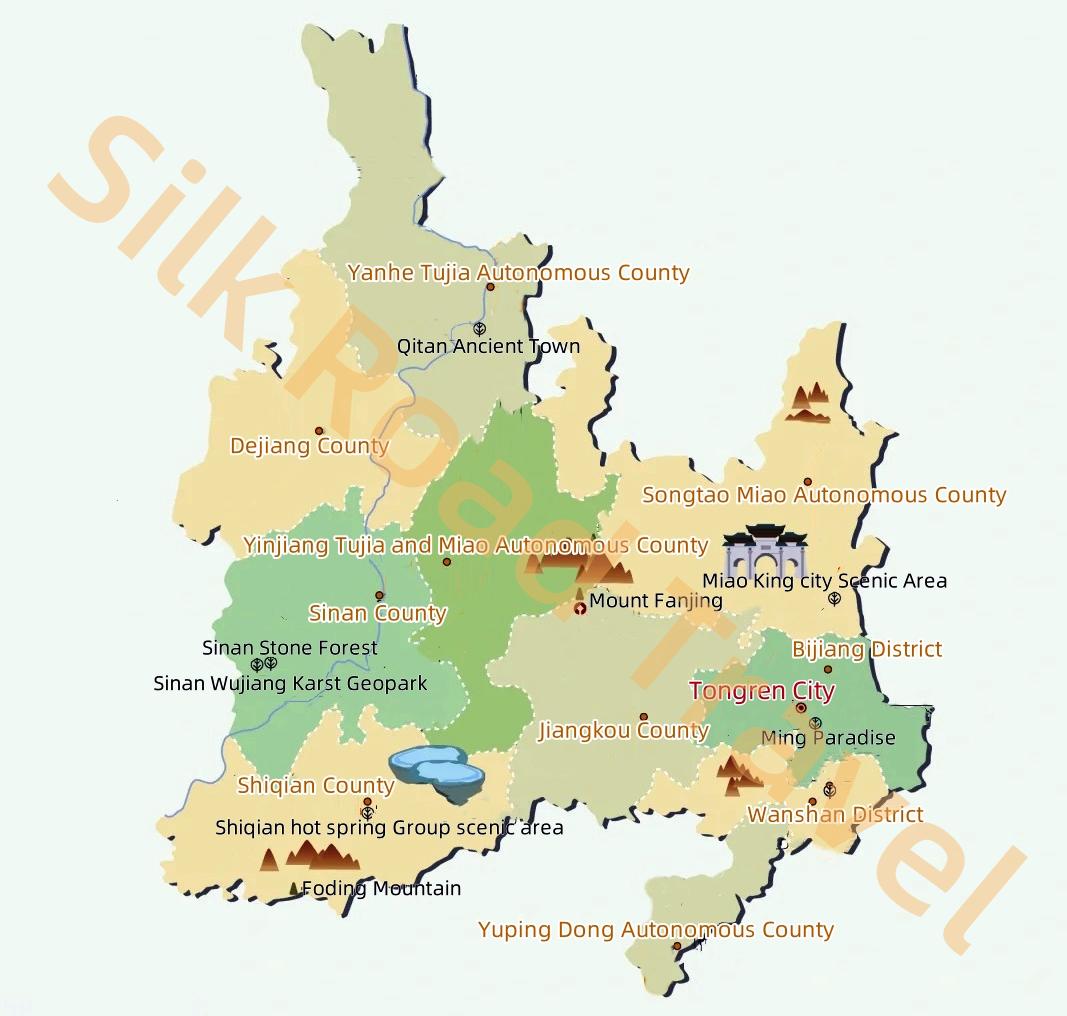
Qiandongnan Miao and Dong Autonomous Prefecture (Southeast Guizhou)
Qiandongnan Miao and Dong Autonomous Prefecture, located in the southeastern part of Guizhou Province, is an autonomous prefecture under the jurisdiction of Guizhou. Covering a total area of 30,282 square kilometers, it administers 15 counties and one county-level city. Situated in the transitional zone between the Yunnan-Guizhou Plateau and the Xiang-Gui Hilly Basin, most of the areas within the prefecture have an elevation ranging from 500 to 1,000 meters.
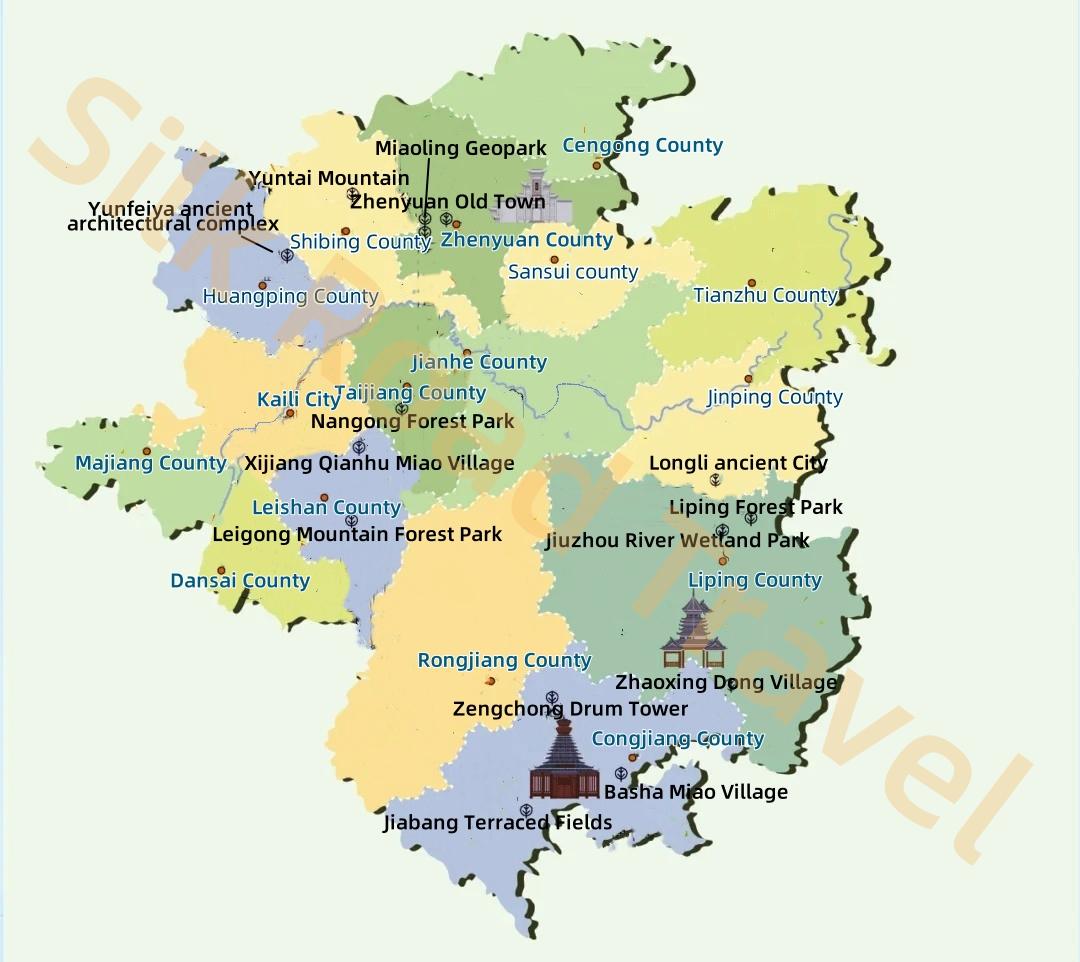
Qianxinan Buyi and Miao Autonomous Prefecture (Sounthwest Guizhou)
Qianxinan Buyi and Miao Autonomous Prefecture, with its capital city in Xingyi, is one of the nine prefecture-level administrative regions in Guizhou Province. Located in the southwestern part of Guizhou, the prefecture covers a total area of 16,804 square kilometers. Belonging to the Nanpanjiang and Beipanjiang watersheds of the Pearl River system, Qiannan is a typical low-latitude and high-altitude mountainous region, with most of its elevations ranging from 1,000 to 2,000 meters.
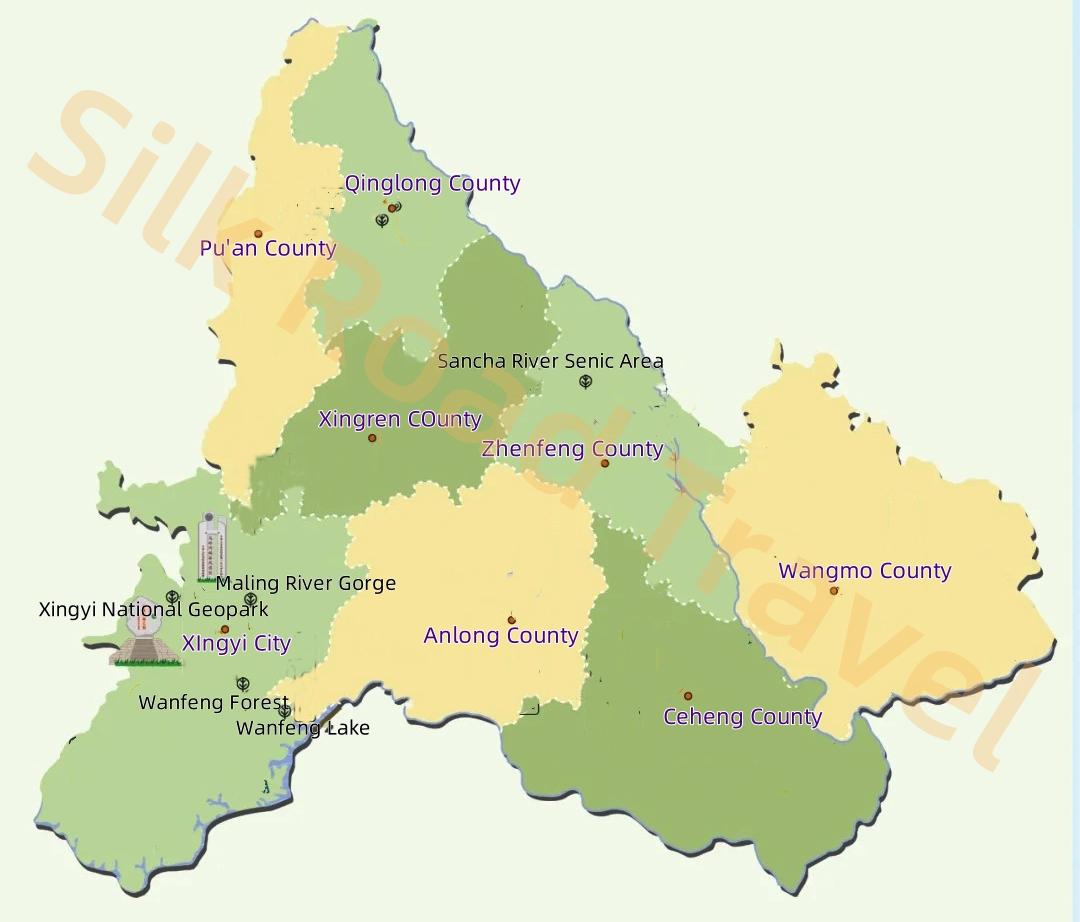
Qiannan Buyi and Miao Autonomous Prefecture (South Guizhou)
Qiannan Buyi and Miao Autonomous Prefecture, situated in the central-southern region of Guizhou Province, lies in the transitional slope zone between the Guizhou Plateau and the Guangxi hills. Characterized by a terrain that slopes downward from north to south, the prefecture covers a vast area of 26,200 square kilometers, encompassing two county-level cities, nine counties, and one autonomous county.
